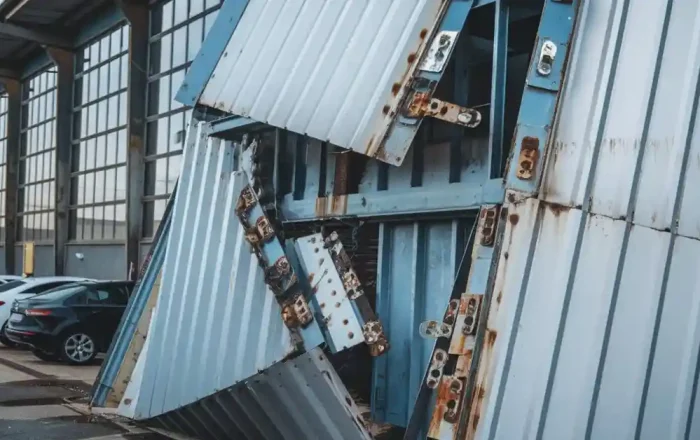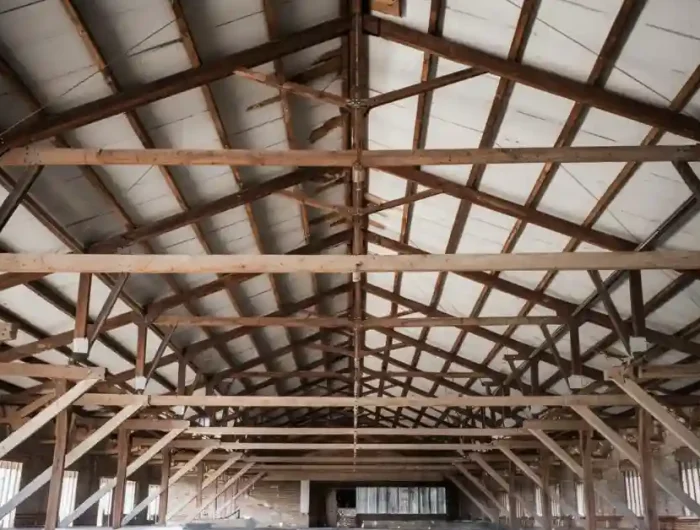How to Repair Metal Building Fastener Failures: A Complete Guide for Houston Property Owners
Your metal building is a durable asset, but its strength relies on tiny, critical components: its fasteners. When metal building screws and other fasteners begin to fail, it can lead to a cascade of problems, from annoying leaks to serious structural compromises. For property owners in Houston, where humidity and weather can accelerate wear, understanding how to address these issues is crucial.
This guide will walk you through the entire process, from spotting the early warning signs to executing a permanent repair. We’ll help you restore your building’s integrity and protect your investment for the long haul.
Understanding the Enemies: Different Types of Fastener Failures
Before you can fix a problem, you need to know what you’re up against. Metal building fastener failures typically stem from a few common culprits. Getting familiar with these enemies will help you diagnose issues correctly and choose the right repair strategy.
Corrosion: The Silent Killer
First and foremost is galvanic corrosion. This is an electrochemical reaction that occurs when two different metals—like your steel panel and the aluminum or steel screw holding it—are in contact in the presence of moisture. Houston’s humid climate provides the perfect environment for this reaction. In this process, one metal (the anode) corrodes faster than it would alone, while the other (the cathode) is protected. Unfortunately, the fastener often becomes the sacrificial anode, weakening and rusting away. You’ll often see this as white crusty deposits on aluminum or reddish rust on steel components.
Installation Errors: A Self-Inflicted Wound
Another widespread issue is simple improper installation. This can take many forms that might not show problems until months or years later. Over-tightening is particularly common when using impact tools instead of controlled screw guns. This can strip the screw heads, damage the sealing washer, or even snap the screw shank. Conversely, under-tightening leaves the connection loose, allowing the panel to move, which leads to wear, vibration, and an ineffective seal against water intrusion.
Fatigue and Galling: The Hidden Dangers
Finally, fasteners can fail due to fatigue from constant vibration or stress cycles. Think of how a paperclip breaks after being bent back and forth repeatedly – that’s metal fatigue in action. Additionally, galling occurs when threads seize and fuse together due to friction and heat during installation, making them impossible to remove without specialized tools. This is especially common with stainless steel fasteners.
Spotting the Signs: A Quick Inspection Checklist

Catching fastener issues early can save you from much more expensive repairs down the line. Here’s what to look for during a routine inspection:
- Rust Streaks: The most obvious sign. Rusty streaks on your walls or roof panels signal that a fastener is corroding and needs immediate attention.
- Water Leaks: A leak inside your building often traces back to a failed fastener washer or a hole that has widened around a corroded screw. Don’t just patch the interior – trace it to the source.
- Loose or Missing Screws: Gently try to tighten a few screws. If they spin freely, the threads are stripped. Look for any spots where screws are completely absent, which often indicates complete failure.
- Damaged Washers: The rubber or neoprene washer under the screw head is your first defense against water. Check for washers that are cracked, crushed, or deformed, as they’ve lost their sealing capability.
Gathering Your Arsenal: Essential Tools and Materials for Repairs
Having the correct supplies is half the battle for successful repairs. Trying to cut corners here will only lead to having to redo the work sooner rather than later.
Must-Have Replacement Fasteners
Do not reuse old screws! You’ll need replacement metal building screws that match the length, diameter, and thread of the originals. More importantly, choose screws with robust corrosion-resistant coatings. Look for options with a triple-layer system featuring a zinc undercoat, an anti-corrosion film, and a tough ceramic topcoat for superior protection against Houston’s elements.
Critical Sealants and Tools
A high-quality, exterior-grade urethane or butyl rubber sealant is absolutely essential for creating a watertight seal around your new fasteners. For tools, you’ll need a cordless drill/screw gun with a magnetic socket that fits your new screws perfectly – avoid using impact wrenches as they make controlling torque difficult. Don’t forget safety gear including gloves, eye protection, and a stable ladder system for roof work.

Your Action Plan: Detailed Step-by-Step Repair Process
Once you’ve identified problematic fasteners and gathered your materials, it’s time to take action. Safety first: always use a stable ladder, wear proper footwear, and have a spotter if you’re working on a roof.
Step 1: Safe Removal of Failed Fasteners
Carefully back out the old screw using your screw gun or a manual driver. If it’s seized due to galling or rust, you may need to use a screw extractor kit. For stripped heads, a pair of locking pliers might provide enough grip. If all else fails, you might need to carefully drill out the fastener – proceed slowly to avoid damaging the surrounding material.
Step 2: Thorough Hole Preparation
Use a wire brush to remove all rust, old sealant, and debris from the existing hole. For the best seal, a clean surface is absolutely vital. If the hole has become enlarged or misshapen from movement or corrosion, you may need to use a slightly larger diameter screw or consider using a sealing washer designed for oversized holes.
Step 3: Proper Sealant Application
Fill the existing hole generously with your exterior-grade sealant. This will act as both a gasket and moisture barrier. Some professionals prefer to apply a bead of sealant to the washer of the new screw as well, creating a double seal. Don’t be shy with the sealant – it’s better to have a little squeeze out than not enough.
Step 4: Precise New Fastener Installation
Drive the new, coated screw directly into the sealed hole. Be sure to use the correct drill point if you’re using self-drilling screws for the material thickness. Let the screw gun do the work – don’t apply excessive pressure. The goal is a smooth, controlled installation.
Step 5: Achieving Perfect Torque
This is where many DIY repairs go wrong. Stop driving as soon as the washer makes full contact with the metal panel and is slightly compressed – you want the washer to be flush with the metal but not squashed flat. A good rule of thumb is to stop when the first bit of sealant just begins to squeeze out from under the washer.
Going Beyond Repair: Proactive Prevention Beats Reactive Fixes
A repair is a temporary solution if the underlying conditions aren’t addressed. To prevent future metal building fastener failures, make these practices part of your maintenance routine.
- Choose Quality from the Start: Always opt for fasteners made from corrosion-resistant materials or those with advanced protective coatings. This upfront investment pays off by extending the lifespan of your building exponentially.
- Ensure Material Compatibility: Using the same metal for fasteners and panels isn’t always possible, but choosing fasteners with insulating washers can help prevent galvanic corrosion by separating the two dissimilar metals.
- Schedule Regular Inspections: Make it a habit to visually inspect your fasteners at least twice a year, ideally in the spring and fall. Look for the early signs we discussed and address them immediately.
- Partner with Professionals: For extensive damage or if you’re unsure about the safety of your structure, calling a professional is the wisest choice. A reputable company can assess the damage and provide a comprehensive repair plan. In fact, for any major concerns, it’s a great idea to get a free flat roof repair estimate from a trusted local provider.
Secure Your Building From Fastener Failures
Metal building fastener failures might seem like small issues, but they are the front line of defense for your entire structure. By learning to identify, repair, and, most importantly, prevent these failures, you are taking a proactive step toward safeguarding your property. Don’t let a tiny screw lead to massive headaches. With the knowledge from this guide, you can take control of your building’s maintenance and ensure it stands strong for years to come.
If your inspection reveals more significant damage than a few loose screws, or if you’d simply prefer the peace of mind that comes with a professional assessment, Houston Building Repair Company is here to help. Our experts can identify issues you might miss and ensure your repairs are done right the first time.
Latest Article: Fire Damage Restoration Process
